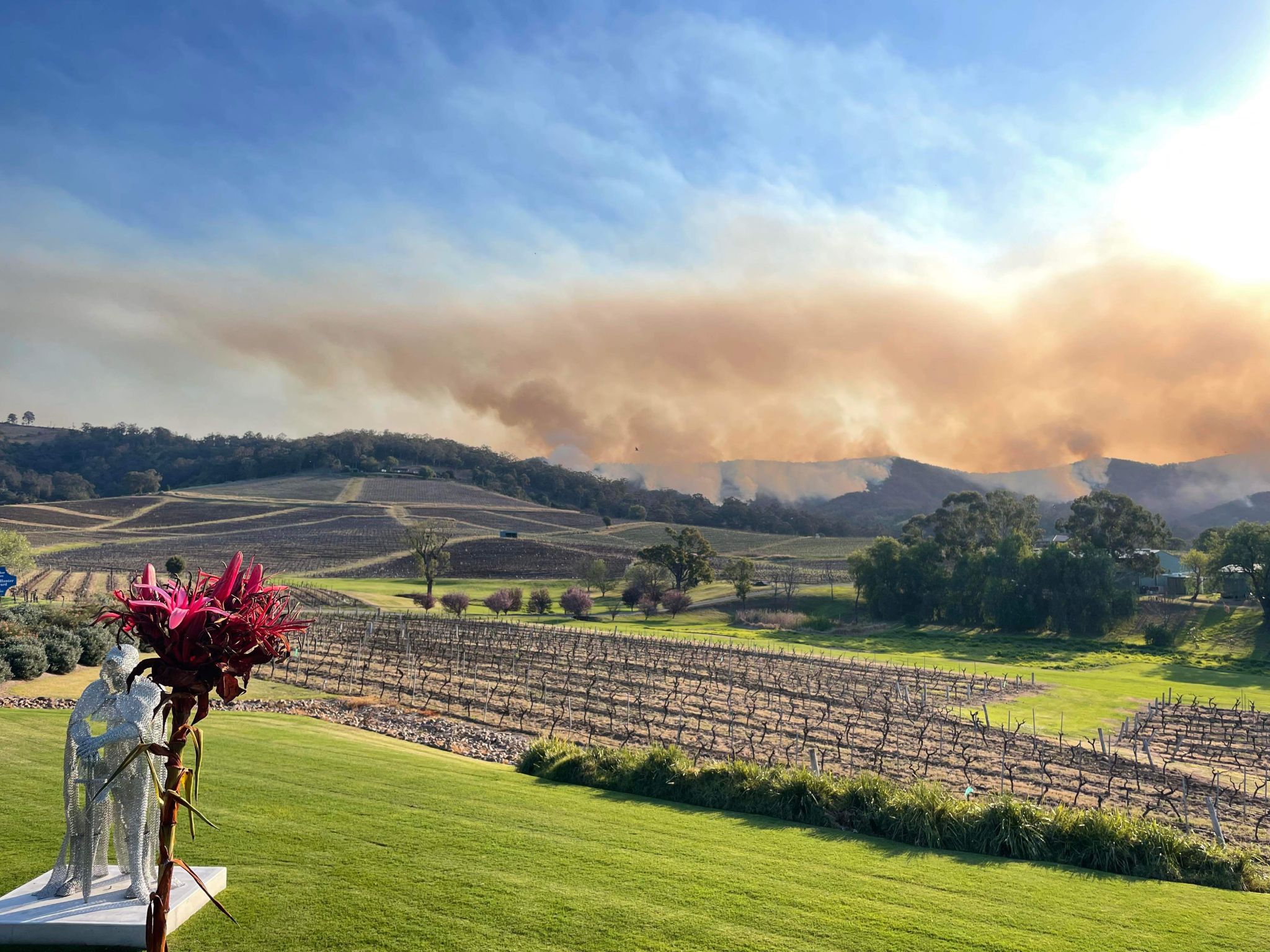When we conduct tastings at Ivanhoe Wines, we often receive questions about how weather influences the quality and characteristics of our vintages. The interplay between climate conditions and grape development is indeed intricate, especially in a unique region like the Hunter Valley.
The Hunter Valley Climate
The Hunter Valley is renowned for its warm climate, characterised by hot summers and mild winters. This warmth allows for the cultivation of grape varieties such as Shiraz and Semillon, which thrive under these conditions. However, the region also experiences high humidity and significant rainfall during the growing season, factors that can pose challenges for viticulture.
Another challenge that winemakers in the Hunter Valley face is the threat of bushfires, particularly in hotter, drier years. Smoke from nearby fires can affect the grapes, leading to a phenomenon known as smoke taint, which can impact the flavour of the wine. While vineyard management strategies can help mitigate these risks, extreme conditions can still pose a significant challenge to certain vintages.
Temperature and Grape Ripening
Temperature plays a pivotal role in grape development. Warm temperatures accelerate the ripening process, leading to higher sugar levels in the grapes, which in turn results in wines with elevated alcohol content and richer flavours. Conversely, cooler temperatures slow down ripening, preserving acidity and producing wines with more delicate aromas.
In the Hunter Valley, the warm climate typically ensures that grapes reach optimal ripeness, contributing to the full-bodied and robust profile of our red wines, particularly our signature Shiraz.
Rainfall and Humidity
While adequate rainfall is essential for vine health, excessive moisture, especially close to harvest, can dilute flavours and increase the risk of diseases such as botrytis. The Hunter Valley’s high humidity levels necessitate vigilant vineyard management to maintain grape quality.
For instance, the 2024 growing season was marked by a sustained period of dry weather, leading to smaller grape yields but resulting in wines of exceptional quality. The lack of rain, coupled with hot and windy conditions during the critical flowering period, further contributed to the low yields. 
Adaptation and Vineyard Management
To mitigate the challenges posed by our climate, we employ various strategies, including canopy management to enhance air circulation and reduce disease pressure, as well as careful irrigation practices to ensure vines receive the right amount of water at critical growth stages.
Embracing the Vintage Variation
Each vintage tells the story of the year’s weather patterns. At Ivanhoe Wines, we embrace this natural variation, understanding that the unique climate of the Hunter Valley imparts distinctive characteristics to our wines, making each bottle a reflection of its time and place.
By appreciating the relationship between weather and wine, we can better understand and enjoy the nuances that each vintage brings to our glasses.
Experience the Varying Taste of the Hunter Valley
Want to learn more about how our vineyard’s climate shapes the wines we craft? Join us for a wine tasting at Ivanhoe Wines and experience firsthand how the Hunter Valley’s unique weather influences every sip. Our knowledgeable team will guide you through a selection of our finest wines, sharing insights into our winemaking process and the stories behind each vintage. Book your tasting today and discover the magic of Ivanhoe Wines.


